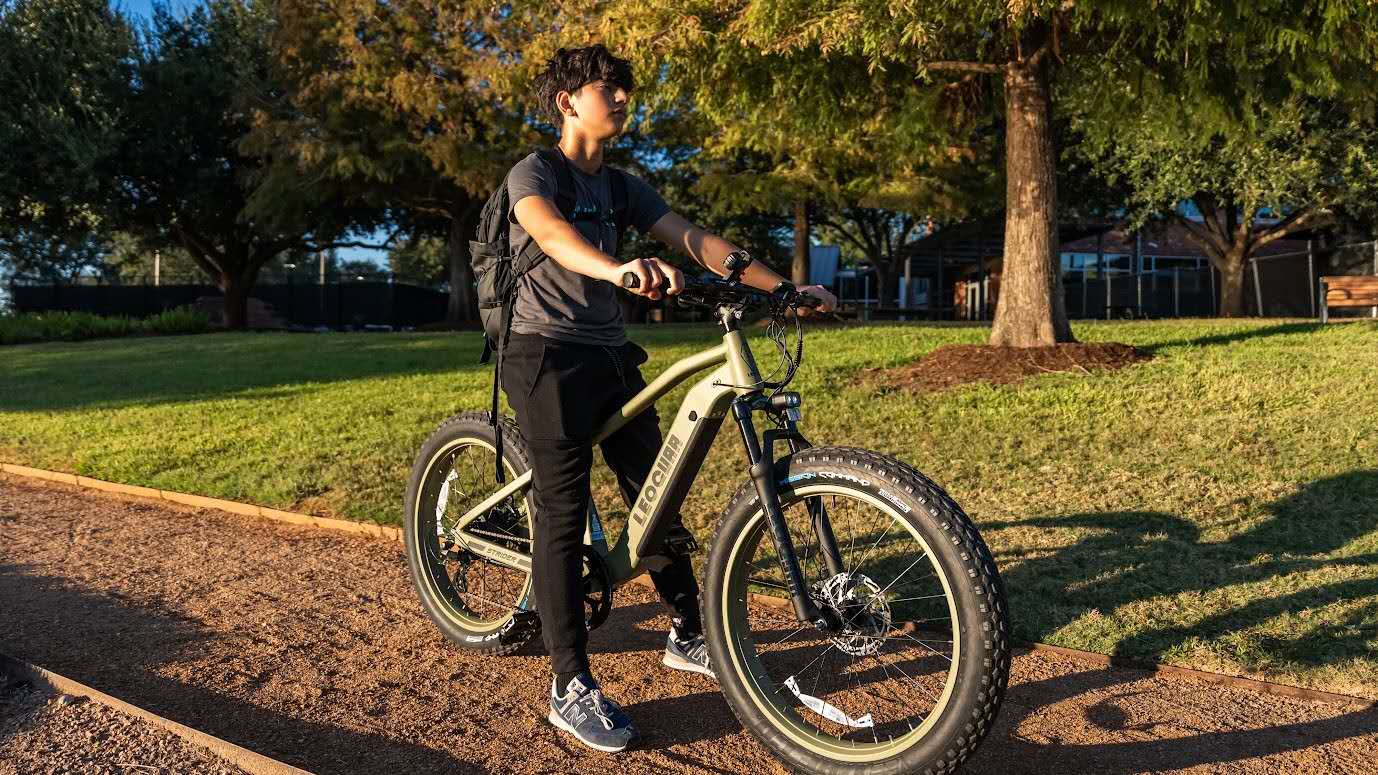
Electric Personal Transportation - A Comprehensive Analysis for Los Angeles County
Executive Summary
The landscape of personal transportation is undergoing a significant shift, with electric vehicles emerging as increasingly viable and attractive alternatives to traditional gasoline-powered options. This report provides a comprehensive analysis of electric scooters, electric motorcycles, and electric bicycles, focusing on their definitions, types, performance characteristics, costs, legal requirements within Los Angeles County, California, environmental implications, comparative advantages and disadvantages, market trends, and maintenance needs. The analysis reveals a diverse ecosystem of electric personal transportation, each offering unique benefits and drawbacks tailored to different user needs and scenarios within the urban and suburban context of Los Angeles County. As the region continues to prioritize sustainable mobility solutions, understanding the nuances of these electric vehicle categories is crucial for individuals, policymakers, and businesses alike.
Introduction: The Rise of Electric Personal Transportation
The global movement towards sustainable transportation is gaining momentum, driven by environmental concerns, rising fuel costs, and advancements in electric vehicle technology. Electric vehicles (EVs) are at the forefront of this transformation, offering a cleaner and often more efficient alternative to internal combustion engine vehicles. Within the broader EV landscape, electric scooters, motorcycles, and bicycles have emerged as popular personal transportation solutions, particularly in densely populated urban environments. These smaller, lighter electric vehicles offer agility, reduced emissions, and lower operating costs, making them appealing for commuting, running errands, and leisure activities. Los Angeles County, with its commitment to environmental sustainability and its diverse transportation needs, presents a compelling case study for the adoption and integration of these electric mobility options. This report aims to provide a detailed overview of electric scooters, motorcycles, and bicycles, examining their various facets to inform individuals and entities in Los Angeles County considering their adoption or investment. By exploring their definitions, performance, costs, legal framework, environmental impact, and market presence, this analysis seeks to provide a comprehensive understanding of the current state and future potential of electric personal transportation in the region.
Understanding Electric Scooters, Motorcycles, and Bicycles
Definitions and Key Features
Electric Scooters: An electric scooter, also frequently referred to as an e-scooter or electric kick scooter, is fundamentally a motorized stand-up scooter powered by an electric motor, typically located in the hub of either the front or rear wheel.1 These devices are characterized by their two-wheeled design, handlebars for steering, and a central floorboard on which the rider stands.1 A key distinction from electric motorcycles lies in the scooter's step-through frame, which facilitates mounting and dismounting.3 The core components of an electric scooter include an electric motor, a rechargeable battery that supplies power to the motor, a throttle for controlling speed, and a braking system for safety.1 The standing posture of the rider is a defining characteristic that differentiates e-scooters from other seated electric vehicles. The common use of hub motors suggests a design focused on simplicity and direct power delivery to the wheels.
Electric Motorcycles: Electric motorcycles are defined as two-wheeled electric vehicles that utilize a rechargeable battery as their primary power source, which in turn drives one or more electric motors.3 Unlike electric bicycles, electric motorcycles do not have pedals and are propelled solely by the electric motor.4 Riders of electric motorcycles sit astride the frame, similar to conventional gasoline-powered motorcycles.3 Essential features of an electric motorcycle include a rechargeable battery, often of the lithium-ion type due to its energy density 5, an electric motor that converts electrical energy into mechanical motion, a controller that manages the flow of electricity from the battery to the motor, and a braking system, which is often operated via handlebars.4 The absence of pedals is a fundamental aspect that distinguishes electric motorcycles from electric bicycles, placing them firmly within the realm of motorized vehicles. The focus on battery technology and motor power underscores the performance-oriented nature of these vehicles.
Electric Bicycles: An electric bicycle, commonly known as an e-bike, electrically assisted pedal cycle, or electrically power-assisted cycle, is essentially a bicycle that has been equipped with an integrated electric motor to provide assistance to the rider's pedaling effort.6 A crucial characteristic of e-bikes is that they retain the ability to be propelled by the rider pedaling, meaning the electric motor serves to augment, rather than replace, human power.3 In California, the legal definition of an e-bike includes the requirement of fully operable pedals and an electric motor with a power output of less than 750 watts.7 Key features of electric bicycles include the operable pedals, the electric motor (subject to power limitations), and a rechargeable battery that powers the motor. The presence of pedals is not just a defining feature but also carries significant legal implications, often classifying e-bikes differently from other motorized two-wheeled vehicles. The specific power limit in California is a critical regulatory element that shapes the design and performance of e-bikes sold and operated within the state.
Detailed Breakdown of Different Types
Electric Scooters: The market for electric scooters has diversified significantly, resulting in various types tailored to specific needs and preferences.11 Commuter electric scooters are designed for everyday use, particularly for short trips to work, school, or around town. They are typically lightweight and feature a foldable design for enhanced portability and storage. While offering moderate speed and range, their durable construction ensures they can withstand the rigors of daily commutes. The controls are generally simple, with a user-friendly interface.11 The emphasis on foldability and light weight directly addresses the practical needs of urban commuters who may need to carry their scooter on public transport or store it in compact spaces.
For those with a penchant for adventure, off-road electric scooters are built to handle rough terrains such as dirt trails, gravel paths, and even forest trails. These scooters boast a more robust construction and are equipped with enhanced suspension systems to absorb shocks. Larger, knobby tires provide better traction on uneven surfaces, and powerful motors enable them to tackle inclines and challenging terrains.11 This category caters to outdoor enthusiasts seeking recreational opportunities beyond paved roads.
Performance electric scooters are engineered for speed and power, offering higher top speeds, often exceeding 30 mph, and quicker acceleration compared to standard commuter models. These scooters typically feature more powerful motors, sometimes up to 2000W or more, and are equipped with long-range batteries to support extended high-performance rides. Advanced braking systems are also common in this segment.11 This type appeals to thrill-seekers and individuals who require high-speed capabilities for longer commutes.
Safety and ease of use are the primary considerations for electric scooters for kids. These models have lower speed limits, typically around 10-15 mph, and feature simplified controls suitable for younger riders. They are usually lighter and smaller in size to accommodate children and often include enhanced safety features like lower decks and padded handlebars.11 This category prioritizes the well-being of young riders.
Seated electric scooters offer a more comfortable riding experience, featuring a built-in seat and a larger frame for increased stability. They often come equipped with larger batteries, allowing for longer rides without discomfort. These scooters are well-suited for long-distance riders, older adults who prefer sitting over standing, and anyone prioritizing a relaxed riding experience.11 Comfort and stability are the key selling points of this type.
Three-wheeled electric scooters provide enhanced stability due to their three-wheel design, making them a popular choice for elderly riders or individuals with mobility issues. These scooters can be found in both standing and seated versions and generally have lower speeds for added safety. They often include additional safety features to cater to their target demographic.11 This design directly addresses balance concerns.
Fat-tire electric scooters are characterized by their wide tires, which provide excellent stability and balance, making them suitable for rough terrains. Some models also include a seat, enhancing rider comfort for a more luxurious cruising experience. With their distinctive look, often likened to "mini motorcycles," they appeal to riders seeking both style and comfort.12 The wide tires offer superior handling on varied surfaces.
Finally, the choice between dual motor and single motor electric scooters impacts performance and cost.13 Dual motor scooters, with motors on both wheels, offer significantly increased driving force (torque) and traction, which is particularly advantageous when tackling steep inclines or less than ideally paved surfaces like dirt paths. However, this enhanced performance comes at the cost of increased price and weight. Single motor scooters, typically with the motor in the front wheel hub, are generally less expensive. While dual motors don't automatically translate to increased speed on level ground, they can positively influence it in most cases. Many dual motor scooters offer the option to operate on a single motor, although this doesn't seem to significantly improve range for most riders.13 This trade-off allows consumers to select a scooter that best fits their budget and riding environment.
Electric Motorcycles: The electric motorcycle market also encompasses various types, each designed for different riding styles and purposes.3 Sportbikes are engineered with a focus on speed, acceleration, and braking capabilities, often prioritizing these parameters over riding comfort or cost-effective operation. They are primarily designed for experienced motorcyclists who demand high performance.14 This category mirrors the high-performance segment of gasoline motorcycles.
Enduro motorcycles are specifically designed for the sport of enduro, which involves riding over a defined route, often across challenging terrain. These electric models are built to withstand the demands of off-road competition.14 This caters to the off-road racing community.
Naked motorcycles combine the performance characteristics of sportbikes with the absence of fairings and a windshield. Their design allows for efficient cornering at high speeds, offering a blend of performance and agility.14 This style provides a more exposed and aggressive aesthetic.
Cruisers are electric motorcycles designed with an emphasis on tourism and covering long-distance routes. Comfort and a relaxed riding posture are typically prioritized in this segment.14 This type aims for comfortable long-distance travel.
For those new to electric motorcycles, commuter models offer a good balance of range, performance, and affordability. These are often suitable for beginners seeking a practical and manageable electric ride.5 This serves as an entry point to the electric motorcycle world.
Off-road electric motorcycles are built to tackle trails and unpaved surfaces, catering to riders who enjoy exploring beyond paved roads.5 Similar to off-road scooters, this segment focuses on ruggedness and off-road capability.
Touring electric motorcycles are designed for long-distance travel, often featuring enhanced comfort and potentially more storage options to accommodate luggage for extended journeys.5 This type prioritizes practicality for long trips.
Electric Bicycles: Electric bicycles are categorized based on their level of motor assistance and speed capabilities, as well as their design and intended use.6 In California, e-bikes are legally classified into three main classes.7 Class 1 e-bikes provide motor assistance only when the rider is pedaling and cease to provide assistance once the bicycle reaches a speed of 20 mph. These are treated largely the same as conventional bicycles under California law.7 The pedal-assist-only nature and the 20 mph speed limit align with traditional cycling experiences.
Class 2 e-bikes operate via either pedal-assist or a throttle and stop providing assistance when the bicycle reaches a speed of 20 mph. The throttle allows the motor to power the bike even without the rider pedaling.7 The inclusion of a throttle offers riders more flexibility in how they utilize the electric assistance.
Class 3 e-bikes provide assistance only when the rider is pedaling and cease to assist when the bicycle reaches a speed of 28 mph. This class represents the fastest "legal" e-bike category and is often favored by commuters. In California, a helmet is required for all riders of Class 3 e-bikes, and the rider must be at least 16 years old.7 Due to their higher speed, Class 3 e-bikes may face restrictions on certain bicycle paths.7 The higher speed capability caters to those needing to cover more distance quickly.
Beyond these class-based classifications, e-bikes are also categorized by their design and intended use. Comfort or cruiser e-bikes are designed for casual recreational riding, emphasizing comfort and control with an upright riding position and comfortable saddle.16 Hybrid or commuter e-bikes are built for longer distances and speed, ideal for commuting to work or getting around town quickly. They often feature longer ranges and can reach speeds up to 28 mph. Many come equipped with racks for carrying belongings.16 Mountain or off-road e-bikes are designed for riding on trails, offering more power and stability for tackling challenging terrains.16 Folding electric bikes are designed for portability and easy storage, often featuring a folding frame.18 Fat-tire electric bikes have wide tires for better traction on various surfaces like sand and snow.18 Cargo electric bikes are built to haul heavy loads, from groceries to children.18 Step-through electric bikes feature a frame design that makes it easier to mount and dismount, appealing to a wider range of riders.18 Finally, lightweight electric bikes prioritize speed, agility, and maneuverability by minimizing weight.18 These diverse categories illustrate the broad applicability of electric bicycles for various transportation and recreational needs.
Performance Landscape: Range, Speed, and Charging Capabilities
Electric Scooters
The performance of electric scooters varies considerably depending on the model and its intended use. In terms of range, budget-friendly electric scooters typically offer a range of 10 to 15 miles on a single charge.20 Mid-range models generally extend this to between 15 and 30 miles, while premium scooters can achieve ranges of 40 miles or more.20 Some high-performance models boast even greater ranges, with one reference indicating up to 124 miles.1 It's important to note that the actual range experienced by a rider is influenced by several factors, including the battery capacity of the scooter, the type of terrain being traversed, the speed at which the scooter is operated, and the weight of the rider.13 Rider weight, in particular, can have a more significant impact on the range of electric scooters compared to heavier vehicles like automobiles.13
The speed capabilities of electric scooters also vary across different price points and models. Cheaper electric scooters often have a top speed in the range of 15 to 19 mph.20 Mid-range scooters typically offer speeds between 20 and 30 mph, while premium models can exceed 40 mph.20 Some electric scooters designed for adult use are capable of reaching maximum speeds from 15 to roughly 60 mph, with more expensive models generally having greater speed capabilities.13 However, in many jurisdictions, including within Los Angeles County, there may be legal speed limits in place for electric scooters, often capped at 15 mph.2
Charging time for electric scooters typically falls within the range of 4 to 8 hours to achieve a full charge.23 However, this can vary significantly, from as little as 1 hour to as much as 20 hours, depending on the specific model and the capacity of its battery, as well as the power output of the charger being used.23 Scooters with larger battery capacities, often found in higher-end models like the Minimotors Dualtron Storm or Kaabo Wolf Warrior X, can take considerably longer to charge, sometimes around 10 hours or more, due to their large batteries which can have capacities up to 3000Wh.26 Many of these high-performance scooters also offer fast charger options that can reduce charging times to under 10 hours.26 It's also worth noting that the charging speed of an electric scooter battery is not constant; it tends to charge faster at the beginning and then gradually slows down as it approaches full capacity. This slowdown is often managed by the scooter's Battery Management System (BMS), which ensures the battery's safety by reducing power input as it nears a full charge, thereby preventing overcharging and overheating.26 Fast chargers, while convenient for quickly replenishing battery power, may exert more stress on the battery with frequent use.23
| Feature | Budget Electric Scooters | Mid-Range Electric Scooters | Premium Electric Scooters |
| Typical Range | 10-15 miles | 15-30 miles | 40+ miles |
| Typical Speed | 15-19 mph | 20-30 mph | Exceeding 40 mph |
| Typical Charging Time | 4-8 hours | 4-8 hours | 4-10+ hours |
Note: Data compiled from 20 and.27 Specific model performance may vary.
Electric Motorcycles
Electric motorcycles generally offer enhanced performance compared to electric scooters, particularly in terms of range and speed. The typical range for currently available electric motorcycles is mostly between 150 and 300 kilometers (approximately 93 to 186 miles).14 Some models, such as the Zero SR/S, boast a range of up to 171 miles.28 Similar to other electric vehicles, the actual range achieved by an electric motorcycle can be influenced by various riding conditions, including speed, the weight of the rider and any cargo, wind resistance, and the steepness of inclines.28
In terms of speed, electric motorcycles are capable of achieving significant velocities. While some sources note that their top speeds are generally lower than those of comparable internal combustion engine models, certain electric motorcycles can still accelerate to speeds exceeding 300 km/h (around 186 mph).14 The Zero SR/S, for example, has a stated top speed of 124 mph.28 The instant torque provided by electric motors often results in rapid acceleration, which can be a key performance advantage for electric motorcycles.4
The charging time for electric motorcycles can vary depending on the charging method and the capacity of the battery. Level 1 charging, which involves plugging into a standard wall outlet, is the most basic and widely accessible method, typically taking around 8 hours to achieve a full charge, often done overnight.3 For motorcycles with larger batteries, this can extend up to 10 hours or more.28 Level 2 charging, which utilizes a 240-volt connection and is commonly found at public charging stations, offers a significant speed improvement, typically charging an electric motorcycle in 1 to 4 hours.28 Some models, like those from LiveWire, are compatible with DC fast charging (Level 3), which can rapidly recharge the battery. For instance, the LiveWire One can charge from 0 to 80% in about 40 minutes and achieve a full 100% charge in just 1 hour using a DC fast charger.29 However, it's important to note that not all electric motorcycle manufacturers support DC fast charging; for example, Zero motorcycles do not.31 Additionally, some manufacturers, such as Zero Motorcycles and several entrants in the scooter market, have incorporated or offer as an option the ability for quick battery swapping. This allows for charging without the need to be near a charge point or, with a spare battery, enables continuous operation.3
| Feature | Commuter Electric Motorcycle | Sport Electric Motorcycle | Touring Electric Motorcycle |
| Typical Range (miles) | 100-150 | 100-200+ | 150-200+ |
| Typical Speed (mph) | 70-100 | 100-150+ | 80-120+ |
| Level 1 Charging Time | 6-8+ hours | 6-10+ hours | 8-10+ hours |
| Level 2 Charging Time | 1-4 hours | 1-4 hours | 1-4 hours |
| Level 3 Charging Time | Not always available | Often available | Often available |
Note: Data compiled from 5, and.30 Specific model performance may vary.
Electric Bicycles
Electric bicycles offer a balance between human power and electric assistance, resulting in performance characteristics suitable for a wide range of uses. The typical range of an electric bicycle on a single charge is generally between 20 and 50 miles.32 However, this can be significantly influenced by factors such as the capacity of the battery, the weight of the rider and any cargo, the type of terrain being ridden, and the level of pedal assistance being utilized.34 Some models, particularly those with larger batteries or when used with continuous pedaling, can achieve ranges of around 80 miles.32 Additionally, the range can be effectively doubled by carrying a spare battery, a feature that is particularly useful for longer journeys where recharging may not be readily available.36
The speed of electric bicycles is often regulated based on their classification. Class 1 and Class 2 e-bikes in California have a maximum motor-assisted speed of 20 mph.7 Class 3 e-bikes, which are pedal-assist only, can reach speeds of up to 28 mph with motor assistance.7 It's worth noting that even with these limits on motor assistance, riders can still pedal faster than these speeds on their own power, especially on downhill stretches. Some high-powered electric bicycle varieties may be capable of exceeding these limits, but their legality as e-bikes may then come into question.6
The charging time for electric bicycle batteries typically ranges from 3 to 6 hours to achieve a full charge from an empty state.32 Smaller capacity batteries may charge more quickly, within 2 to 3 hours, while larger batteries can take upwards of 6 hours or more to fully replenish.32 The exact charging time is dependent on the capacity of the battery, usually measured in watt-hours (Wh) or amp-hours (Ah), and the power output of the charger being used.36 Higher capacity batteries will generally require more time to charge, and chargers with a higher power output (amperage and voltage) will charge the battery faster.41 It is generally recommended to use the charger that was specifically provided with the e-bike to ensure compatibility and prevent potential damage to the battery.32
| Feature | Class 1 E-bike | Class 2 E-bike | Class 3 E-bike |
| Typical Range | 20-50 miles | 20-50 miles | 20-50 miles |
| Maximum Speed | 20 mph (pedal assist only) | 20 mph (pedal/throttle) | 28 mph (pedal assist only) |
| Typical Charging Time | 3-6 hours | 3-6 hours | 3-6 hours |
Note: Data compiled from 7, and.33 Specific model performance may vary.
Cost of Ownership: Purchase Price and Influencing Factors
Electric Scooter Pricing Analysis
The initial investment for an electric scooter can vary widely, typically ranging from $300 to $4,000, depending on the scooter's quality and features.20 Entry-level models, suitable for beginners or casual riders, can be found starting around $500, with more basic options available in the $300 to $500 range.20 Mid-range electric scooters, offering a better balance of features and performance, generally cost between $600 and $1,500.20 For serious riders seeking top-tier performance and build quality, premium models can exceed $3,000, with some specialty scooters even reaching prices as high as $5,000.20 Electric scooters designed for adults typically fall within the $300 to $1,500 price range.20 The average price across all categories of electric scooters can range from $150 to $7,000.42
Several key factors influence the price of an electric scooter. Battery quality and range are significant determinants, as the battery is often the most expensive component. Higher-capacity batteries, measured in watt-hours, provide greater range but come at a higher cost. Most quality scooters utilize lightweight lithium-ion batteries, which are more expensive than cheaper, heavier lead-acid alternatives but offer better performance.20 Motor power and performance also play a crucial role, with scooters featuring more powerful motors that offer higher speeds and better ability to handle inclines typically commanding a higher price.20 The build quality and materials used in the scooter's construction significantly impact its durability and cost. For instance, scooters with stronger frames capable of supporting higher weight capacities cost more to manufacture. Similarly, pneumatic (air-filled) tires, which offer better shock absorption, are more expensive than solid tires.20 The brand reputation of the manufacturer also affects pricing, with well-known brands often charging more due to the perceived value and reliability associated with their name.42 Additional features, such as advanced suspension systems, more reliable braking systems (often hydraulic in premium models), high-capacity batteries, enhanced safety features, Bluetooth connectivity, or integrated app controls, can also increase the overall cost.20 Finally, the design and aesthetics of the scooter can influence its price, with sleek and stylish designs often commanding a premium.42 Market demand and production scale can also play a role in pricing.45
Electric scooters can be broadly categorized into budget tiers based on price. Entry-level options for beginners and occasional riders are generally priced under $300.20 Mid-range models, offering improved reliability and features, typically cost between $400 and $600, with options under $1,000 often representing the best balance of performance, range, and durability. Premium builds with advanced features for serious riders are usually priced over $1,000.20
In addition to the initial purchase price, potential owners should also consider the cost of battery replacement. For budget models, a replacement battery might cost between $100 and $200, while mid-range models could range from $200 to $350, and premium models may cost $350 or more.20 The battery is typically the most significant long-term expense, often needing replacement after 2 to 4 years or 300 to 500 charging cycles.20
| Price Category | Typical Cost | Key Features |
| Budget Electric Scooters | Under $300 | Entry-level, basic features, limited range (10-15 miles), lower motor power |
| Mid-Range Scooters | $400 - $800 | Improved reliability, better speed (20-30 mph), longer range (15-30 miles) |
| Premium Scooters | $800 - $1,500+ | High performance, extended range (40+ miles), advanced features |
Note: Data compiled from 20 and.46 Specific model features and prices may vary.
Electric Motorcycle Pricing Analysis
The price of electric motorcycles exhibits a significant range, influenced by factors such as battery type, engine power, brand reputation, range, and features.45 Generally, electric motorcycles tend to have a higher initial cost compared to their gasoline-powered counterparts.47 On the lower end of the spectrum, an electric motorcycle typically costs around $7,000 on average, with prices ranging from $5,000 to $10,000.47 Mid-range models can settle in the $7,000 to $12,000 bracket.45 High-performance electric motorbikes can cost as much as $15,000 and may even reach prices as high as $30,000 or more, with some extreme cases exceeding $100,000.45
Several factors contribute to the variability in electric motorcycle prices. The battery type and capacity have a substantial impact on cost, with lithium-ion battery packs, which are more compact and offer extended capacity and lifespan, often increasing the price.45 Motor power is another key factor, as electric motors come in various power outputs, and generally, the higher the power output, the more expensive the motorcycle will be.45 The brand and manufacturer play a significant role, with established brands known for quality and reliability often commanding higher prices.45 Range is also a crucial determinant, with models offering a more extended range typically having a higher cost due to the larger battery capacity required.45 Features and accessories, such as GPS and Bluetooth connectivity, can also contribute to price increases.45 Other factors include the tire type, warranty coverage, speed capabilities, charging time, and the overall design and aesthetics of the motorcycle.45 Government incentives, where available, can help offset the purchase cost in some regions.45 Market demand and production scale can also influence pricing.45
While the upfront purchase price of an electric motorcycle may be higher, it's important to consider the total cost of ownership over the long term. Electric motorcycles typically have lower running costs due to the lower cost of electricity compared to gasoline and reduced maintenance requirements due to fewer moving parts.45 Over a five-year period, the total cost of owning an electric motorcycle, including charging and maintenance, may be lower than that of a comparable gasoline motorcycle when factoring in fuel and potentially higher maintenance costs for the gasoline model.45
| Price Category | Typical Cost | Key Characteristics |
| Entry-Level | $5,000 - $10,000 | Basic range and performance, suitable for commuting |
| Mid-Range | $7,000 - $12,000 | Improved range and performance, more features |
| High-End/Premium | $15,000 - $30,000+ | High performance, extended range, advanced features, premium materials and design |
Note: Data compiled from 45 and.47 Specific model features and prices may vary.
Electric Bicycle Pricing Analysis
The cost of electric bicycles can vary considerably based on a multitude of factors, with the average price ranging from $600 to $2,500.50 However, many models are priced higher, with some costing as much as $8,000 or even upwards of $10,000.50 The typical e-bike rider might expect to pay around $1,500 for their purchase.50 Electric bikes can be found in budget-friendly options ranging from $600 to $1,500, mid-range models with upgraded features priced between $1,500 and $3,000, and high-performance and luxury models exceeding $3,000.52
One of the most significant factors influencing the price of an electric bike is the battery quality and capacity. The battery is often considered the most expensive component, potentially accounting for 30% to 50% of the total cost.50 A high-capacity battery allows for longer distances but increases the overall cost, with a 500 Wh battery typically being more expensive than a 300 Wh battery.53 The motor type and power are also crucial price determinants. Electric bikes come with motors of varying power, and some high-end models offer more powerful motors, increasing the price. Mid-drive motors generally provide superior performance and efficiency compared to hub motors, often leading to increased prices.50 The frame material plays a role as well, with aluminum frames being cheaper than carbon frames, although carbon frames are lighter and often more durable.50 The brand of the e-bike can also affect the price, with renowned brands often offering guarantees and better after-sales services, justifying a higher cost.53 Components such as hydraulic brakes, high-end gears, and reinforced suspensions all contribute to driving up the bike's price.53 Other factors include the cost of electronics and sensors, innovation and development costs, craftsmanship in assembly and manufacturing, and market dynamics such as supply chain and demand.54 The intended purpose of the e-bike, whether for mountain biking or cargo hauling, can also lead to specialized components that increase costs.52
Compared to traditional bicycles, electric bikes generally have a higher cost of production due to the inclusion of the battery, motor, and associated electronics.51 Specialized components found on e-bikes can be about 30% more expensive than those on regular mountain bikes.56 However, this higher initial investment is often justified by the added benefits of electric assistance, which can make cycling more accessible, easier for commuting, and more enjoyable for a wider range of riders.56
| Price Category | Typical Cost | Key Characteristics |
| Budget-Friendly | $600 - $1,500 | Limited battery range (20-40 miles), simple mechanical brakes, heavier frames |
| Mid-Range | $1,500 - $3,000 | Improved battery range, better components (e.g., hydraulic brakes), lighter frames |
| High-Performance/Luxury | $3,000 and Above | Longest battery range, high-end components, lightweight materials (e.g., carbon fiber) |
Note: Data compiled from 52 and.50 Specific model features and prices may vary.
Navigating the Law: Regulations in Los Angeles County, California
Specific Legal Requirements for Electric Scooters
Operating an electric scooter in Los Angeles County, California, is subject to specific legal requirements aimed at ensuring rider safety and regulating their use in public spaces. A key requirement is the age and licensing of the operator. In unincorporated Los Angeles County, individuals must be a minimum of 18 years old and possess a valid driver's license to operate an e-scooter participating in the Pilot Program.21 Notably, California law allows the operation of motorized scooters with any class of driver's license, including a learner's permit.2 Some sources indicate a minimum age of 16 is permissible if the rider holds a valid learner's permit.58
Speed is also strictly regulated, with e-scooters in the Pilot Program not allowed to exceed 15 miles per hour.21 This speed limit is consistent with state law.2 Regarding where e-scooters can be ridden, the regulations specify that they are to be used on streets and, where available, in bicycle lanes and bicycle paths.2 Riding on streets with a speed limit greater than 25 miles per hour is prohibited unless the rider is within a designated bicycle lane.21 A significant restriction is the prohibition of riding e-scooters on sidewalks.2 The only exception to this rule is when briefly crossing a sidewalk is necessary to enter or exit an adjacent property or to park the scooter.22 Riding e-scooters in crosswalks is also considered a traffic violation.22
While not legally mandated for adults, wearing a helmet is highly encouraged for all e-scooter riders in Los Angeles County.21 However, California law does require riders under 18 years of age to wear a properly fitted and fastened bicycle helmet while operating an e-scooter.8 Violations of this helmet law for minors can result in a ticket.
Several other operational rules are in place. E-scooters are designed for single riders, and carrying additional passengers is not permitted.8 Users are expected to ride responsibly, yield to pedestrians, and when riding on streets, must follow the rules of the road and all motor vehicle laws.21 The use of e-scooters for racing, "stunts," or jumps is explicitly prohibited.21 For safety, e-scooters must be equipped with adequate lighting during low-light conditions, including a white light in front, a red reflector behind, and white or yellow reflectors on either side.57 A functional brake and throttle are also legal requirements.58 Additionally, e-scooters should not exceed a noise level of 80 decibels (dBA).58
Parking of e-scooters is also regulated to prevent obstructions and ensure public access. Devices must be parked in permitted areas only.21 Riders should avoid "lay-down" parking, where the scooter is left lying on its side on the sidewalk, as this creates a tripping hazard.58 Parking is also prohibited in red curb zones, near emergency exits, in areas that block ADA access, at bus stops, and on private property unless permission has been granted by the property owner.58 Finally, it's important to note that driving under the influence (DUI) laws apply to e-scooter riders in California.57
Specific Legal Requirements for Electric Motorcycles
Electric motorcycles in Los Angeles County, as in the rest of California, are subject to a different set of laws compared to e-bikes and e-scooters. This is primarily because they do not meet the legal definition of an e-bike, typically lacking operable pedals and capable of speeds exceeding 28 mph.8 As such, electric motorcycles are governed by regulations applicable to motorcycles and other motor-driven cycles.
A key requirement for operating an electric motorcycle is that it must be registered with the California Department of Motor Vehicles (DMV).7 Additionally, the operator must possess a valid driver's license with a motorcycle endorsement (either an M1 or M2 endorsement may be required depending on the size and power of the motor).2 Furthermore, similar to other registered motor vehicles, electric motorcycles are required to have motor vehicle insurance coverage.7
Unlike e-bikes, electric motorcycles are not permitted to be ridden in bicycle lanes.7 Their operation is restricted to roadways, as they are classified as motor vehicles under the California Vehicle Code. While specific helmet requirements for electric motorcycles are not explicitly detailed in the provided snippets for Los Angeles County, it is highly likely that standard motorcycle helmet laws in California would apply, requiring riders to wear a helmet meeting specific safety standards.
The snippets also mention different classifications of motorized two-wheeled vehicles that fall between e-bikes and full-fledged motorcycles. Motor-driven cycles, which have an engine size smaller than 149 cc, and mopeds (also known as motorized bicycles), which have an electric motor producing less than 4 gross brake horsepower and may have pedals, also require registration with the DMV and a motorcycle license (M1 or M2) to operate.2 Some electric two-wheeled vehicles that are marketed as e-bikes but exceed the power or speed limits for e-bike classifications may be more properly classified as mopeds or motorcycles and would therefore be subject to these more stringent regulations.7
Specific Legal Requirements for Electric Bicycles
Electric bicycles in Los Angeles County, California, are primarily regulated under the California Vehicle Code, which defines an e-bike as a bicycle equipped with fully operable pedals and an electric motor with a power output of less than 750 watts.7 The state recognizes three classes of e-bikes, each with its own set of regulations.7
Class 1 e-bikes are pedal-assist only, with the motor providing assistance up to a maximum speed of 20 mph.7 Class 2 e-bikes can have either pedal-assist or a throttle and also have a maximum assisted speed of 20 mph.7 Class 3 e-bikes are pedal-assist only and can provide assistance up to 28 mph.7
Unlike electric motorcycles, e-bike operators in California are not required to have a driver's license, and the e-bikes do not need to be registered with the DMV, nor do they require license plates or motor vehicle insurance.7 However, e-bike riders must still obey traffic laws, just as they would on a regular bicycle, including following stop signs, traffic signals, and right-of-way rules.7
Helmet requirements for e-bikes in Los Angeles County depend on the class of the e-bike and the age of the rider. For Class 1 and Class 2 e-bikes, riders under 18 years of age are required to wear helmets.7 For Class 3 e-bikes, all riders, regardless of age, must wear a helmet.7 Additionally, all riders under 18 must wear a helmet on any type of bike, motorized or not.7 No passengers are allowed on e-bikes in California.8
E-bikes are generally allowed to use the same roads and bike lanes as regular bicycles.38 Class 1 and Class 2 e-bikes can be used in bike lanes, on shared-use paths, and on roads.38 Class 3 e-bikes, however, are restricted from certain bike paths and must typically stay on the road unless specifically permitted to use bike lanes.7 Generally, Class 1 and Class 2 e-bikes can go on Class 1 bike paths (off-road paths for cyclists and pedestrians) and Class 4 bikeways (protected bike lanes), while all three classes are allowed on Class 2 bike lanes (on-street protected lanes) and Class 3 bikeways (on roadways without special markings).10 Riding e-bikes on sidewalks is generally prohibited unless local ordinances expressly permit it, or in areas like private property.8 In the City of Beverly Hills, for example, vehicles, including e-bikes, are not allowed on sidewalks.8
California law requires that e-bike manufacturers clearly label their bikes with key information such as the top assisted speed and class designation.8 It is also against the law to modify or tamper with electric bicycles in a way that changes their speed capability unless the bike's labeled classification is also changed.37 The maximum power draw for an e-bike to still qualify as such under California law is 750 watts.39
The Environmental Equation: Benefits and Drawbacks
Positive Environmental Impacts Compared to Gasoline Vehicles
Electric scooters, motorcycles, and bicycles offer several significant environmental benefits when compared to their gasoline-powered counterparts. One of the most prominent advantages is the absence of tailpipe emissions during operation.48 This zero-emission characteristic directly contributes to a reduction in air pollution and greenhouse gas emissions, particularly in urban areas where these pollutants can have significant impacts on public health and the environment. By choosing electric over gasoline, individuals can help improve air quality and mitigate climate change.
Furthermore, electric personal transportation options typically exhibit lower energy consumption compared to traditional vehicles.61 Electric scooters and e-bikes consume substantially less energy to function than cars and gasoline-powered two-wheelers, resulting in a lower overall demand for fossil fuels.61 For example, e-bikes can achieve the equivalent of 1,000 miles per gallon or more.73 This energy efficiency not only reduces reliance on natural resources but also promotes more sustainable energy consumption. As the global energy system transitions towards renewable sources like solar and wind power, the environmental sustainability of electric vehicles will be further enhanced.61
Another key benefit is the reduction in noise pollution. Electric scooters and motorcycles operate much more quietly than their gasoline counterparts.48 This can be particularly beneficial in densely populated urban environments where excessive traffic noise can negatively impact the quality of life for residents. The quieter operation of electric vehicles contributes to a more peaceful and serene urban environment.
Electric vehicles also generally require less maintenance due to their simpler mechanical design, featuring fewer moving parts compared to internal combustion engines.48 This reduced maintenance translates to lower repair expenses and a decreased environmental impact associated with the manufacturing and disposal of replacement parts like oil filters, spark plugs, and exhaust systems.
Furthermore, the potential for a lower carbon footprint over the entire lifecycle of electric vehicles, especially when the electricity used for charging is generated from renewable sources, is a significant environmental advantage.63 While the production of batteries and the vehicles themselves does have an environmental footprint, many studies indicate that, over their lifespan, electric vehicles can have significantly lower greenhouse gas emissions than comparable gasoline vehicles, particularly as electricity grids become cleaner.
Finally, the adoption of electric scooters, motorcycles, and bicycles can contribute to a reduction in traffic congestion in urban areas by providing alternatives to private car use for short trips.61 By replacing car journeys, especially for commuting and errands, these smaller electric vehicles can help ease congestion on roadways and reduce emissions from idling vehicles in traffic.
Environmental Concerns and Lifecycle Considerations
Despite the numerous environmental benefits associated with electric personal transportation, there are also important environmental concerns and lifecycle considerations to take into account. One of the primary concerns revolves around the production and disposal of the batteries that power these vehicles.69 These batteries often contain heavy metals and toxic materials that can pose environmental risks if not properly managed at the end of their life. The mining of raw materials such as lithium, cobalt, and nickel, which are essential for battery production, can also have significant environmental impacts, including pollution of waterways, energy-intensive processes, land degradation, and depletion of water resources.87
The manufacturing process of the scooters, motorcycles, and bicycles themselves also requires energy and resources, contributing to their overall environmental footprint.71 While this footprint is generally considered to be smaller than that of manufacturing cars, it is still a factor in the overall environmental impact.
The lifespan of these electric vehicles, particularly shared e-scooters, can be relatively short, with some studies reporting an average lifespan of just one to three months for rental scooters.89 This short lifespan leads to frequent replacement and an increased demand for materials.87 Personal electric scooters may have a longer lifespan, potentially lasting for 300 to 500 rides or one to three years.79 E-bike batteries typically last for around 2 to 4 years or 500 to 1000 charges 91, while electric motorcycle batteries can last anywhere from 3 to 10 years, depending on the type and usage.4 The durability and lifespan of these vehicles and their components are important considerations for minimizing their environmental impact.
The source of electricity used to charge electric vehicles is another critical factor. If the electricity is generated from non-renewable sources such as coal or natural gas, the environmental benefits of electric transportation are reduced.67 The transition to cleaner and renewable energy sources for electricity generation is therefore essential to fully realize the environmental advantages of electric personal transportation.
For shared e-scooter services, the process of collecting and redistributing the scooters, often using gasoline-powered vehicles, can offset some of the emission benefits gained from electric operation.79 Efficient logistics and the use of electric vehicles for fleet management are important for mitigating this issue.
The recycling of lithium-ion batteries, which are commonly used in these electric vehicles, is a complex process and is not yet widely implemented or economically viable.87 Improving battery recycling technologies and infrastructure is crucial for creating a truly sustainable lifecycle for these vehicles.
Finally, lifecycle assessments (LCAs) that evaluate the total environmental impact of electric vehicles from raw material extraction to end-of-life have shown varying results. Some studies suggest that e-scooters, in particular, might have higher lifecycle emissions than initially thought, especially when they replace trips that would have otherwise been made by walking or biking, which are essentially zero-emission modes of transport.79 However, many other studies comparing electric vehicles to gasoline equivalents, including cars, motorcycles, and scooters, have generally found lower overall emissions for the electric options.75 The key to maximizing the environmental benefits of electric personal transportation lies in promoting modal shift (replacing car trips), increasing the lifespan and durability of vehicles, improving battery recycling rates, and transitioning to renewable energy sources for electricity generation.
Choosing Your Ride: A Comparative Analysis for Personal Transportation
Advantages and Disadvantages of Each Option
Electric Scooters: Electric scooters offer a compelling set of advantages, particularly for urban dwellers. Their compact and lightweight design makes them highly portable, with many models featuring folding mechanisms for easy carrying and storage.11 They are exceptionally convenient for short urban commutes and serve as an excellent solution for last-mile transportation.35 Their small size allows them to navigate through congested city traffic with ease 86, and they require minimal storage space at home or in the office.11 Generally, electric scooters have a more affordable purchase price compared to electric motorcycles and bicycles 20, and they typically require lower maintenance than cars or motorcycles due to their simpler design.61 They produce zero tailpipe emissions, contributing to cleaner air in urban environments.62
However, electric scooters also have certain disadvantages. They tend to be less comfortable for long distances as the rider is typically standing 35, and they are generally less stable than bicycles, especially on rough or uneven terrain.35 Their range is often limited compared to electric motorcycles and bicycles 20, and they offer minimal storage capacity for carrying bags or groceries.101 The upright standing position can become tiring over extended periods 101, and their smaller wheels can make them less capable of handling potholes and other road imperfections compared to larger-wheeled vehicles.35
Electric Motorcycles: Electric motorcycles boast significant advantages in terms of speed and acceleration, often delivering instant torque.4 They offer a longer range than both electric scooters and bicycles, making them suitable for more extended travel.14 They are well-suited for longer commutes and recreational riding, providing a more robust and powerful experience.5 Like other electric vehicles, they produce zero tailpipe emissions, contributing to environmental sustainability 4, and they generally require less maintenance compared to gasoline-powered motorcycles.14 Depending on the model, they may also be capable of carrying passengers.
However, electric motorcycles come with certain drawbacks. They typically have a higher purchase price compared to electric scooters and bicycles, and even some gasoline motorcycles.45 Their operation requires a motorcycle license and vehicle registration 7, and insurance is also mandatory.7 While their range is longer than scooters and e-bikes, it can still be limited compared to gasoline motorcycles.67 Charging times are also longer than the time it takes to refuel a gasoline motorcycle 3, and the charging infrastructure for electric motorcycles is not as extensively developed as the network of gas stations.67 Electric motorcycles can also be heavier and less maneuverable than scooters and e-bikes, especially in very tight urban spaces.
Electric Bicycles: Electric bicycles offer a comfortable and versatile mode of transportation. Their seated riding position is generally more comfortable than standing on a scooter, especially for longer rides.101 They provide a longer range than electric scooters, making them suitable for more extensive commutes and recreational trips.16 A key advantage is the option to pedal, allowing riders to get exercise and extend their range if the battery depletes.3 Many e-bikes are equipped with racks and baskets, providing the ability to carry cargo such as groceries or work supplies.16 Their larger wheels and frame generally make them more stable than scooters, particularly on uneven surfaces.102 E-bikes are versatile and can be used for commuting, leisure rides, fitness, and even off-road adventures 16, and they produce zero tailpipe emissions.48 For most classes, no driver's license or vehicle registration is required.7
On the downside, electric bicycles are generally less portable and harder to store than electric scooters due to their larger size and weight.11 They are also typically more expensive than scooters.35 While the option to pedal exists, it can be tiring to do so without electric assist if the battery runs out, although it is still feasible.104 Due to the presence of more mechanical components like gears and a chain, e-bikes may require more maintenance compared to the simpler electric scooter.104
Identifying the Ideal Vehicle for Different Needs and Scenarios
Considering the advantages and disadvantages of each type of electric personal transportation, the ideal vehicle often depends on the specific needs and scenarios of the user. For short urban commutes, last-mile transportation, and navigating heavy city traffic, electric scooters are often the most practical choice due to their portability, agility, and ease of storage.13 For those needing to cover longer commutes, engaging in recreational rides, or prioritizing fitness, electric bicycles offer a comfortable and versatile option with longer ranges and the ability to pedal.16 Individuals seeking high-speed travel, covering longer distances, or looking for a more thrilling riding experience may find electric motorcycles to be the best fit.5
When comfort and stability are paramount, especially for longer rides or for individuals with mobility issues, electric bicycles are generally preferred.101 Seated electric scooters can also be a viable option for those who prefer not to stand.11 If portability and easy storage are the primary concerns, electric scooters, particularly foldable models, hold a significant advantage.11 While folding e-bikes exist, they are typically bulkier than scooters.18 For those who frequently need to carry cargo, electric bicycles, especially cargo-specific models, offer the best solutions with available racks and baskets.18 Electric motorcycles may offer some limited storage options 115, while scooters typically have minimal storage.101 For off-road use, specialized off-road electric scooters and mountain electric bicycles are designed to handle challenging terrain 11, with electric enduro motorcycles also catering to this segment.14 Finally, for those who are budget-conscious, electric scooters generally have the lowest initial purchase cost, making them an accessible entry point into electric personal transportation.20
Market Insights: Popular Models and User Feedback
Overview of Market Trends and Popular Choices
The market for electric personal transportation has witnessed substantial growth in recent years. Electric scooters have gained significant traction, particularly in urban centers, often facilitated by the proliferation of scooter-sharing systems.1 The micromobility market, of which e-scooters are a key component, experienced a major expansion in 2018.1 Several brands have emerged as popular choices in the electric scooter market, including NIU, Rerode, Bluerev, Kaabo, Nami, Punk Electric, InMotion, King Song, OneWheel, Unagi, Segway, Xiaomi, Razor, Gotrax, Apollo, Dualtron, and Levy.12
Electric motorcycles are also gaining popularity as advancements in technology lead to improved performance and a growing awareness of environmental issues drives consumer interest.66 Notable brands in the electric motorcycle sector include Harley-Davidson 3), Zero 3), Lightning 5), Energica 31), BMW 5), Husqvarna 5), Tromox 47), CSC 115), and Damon 15).
Electric bicycles have also seen a surge in popularity as an efficient and eco-friendly mode of transportation.19 They are increasingly being used for commuting, recreational riding, and short-distance travel.109 Popular e-bike brands in the market include Aventon, Rad Power Bikes, Specialized, Bosch (a key component supplier), Shimano (another major component provider), Panasonic, Yamaha, Himiway, Velotric, and Murf.18
Synthesis of Available Reviews and Ratings
While the provided snippets do not offer direct user reviews and ratings in a systematic way, they do provide some insights into the performance and features of specific models, which are often key aspects considered in user feedback. For example, the charging time for the Unagi Model One Classic is mentioned 26, and Car and Driver conducted tests on various electric scooters, providing data on braking distance, top speed, range, average speed, and charging time for models from brands like Unagi, Segway, Niu, and Levy.27 Information on the range, speed, and charging capabilities of electric motorcycles like the Zero SR/S and LiveWire is also available.28
General user preferences can be inferred from the types of scooters, motorcycles, and bicycles available and the features highlighted. For electric scooters, portability is often a highly valued attribute 105, as is convenience for short trips.13 For electric bicycles, comfort, range, and the option to pedal for exercise or extended range are often cited as important factors.101 Electric motorcycle enthusiasts typically prioritize speed, power, and range, along with advanced technology and safety features.4
Based on general market trends and common criteria for evaluating personal transportation, user reviews and ratings of these electric vehicles likely focus on aspects such as the real-world range achieved compared to manufacturer claims, the actual top speed and acceleration, the longevity and reliability of the battery, the overall build quality and durability of the vehicle, the comfort of the ride, and the effectiveness of safety features like brakes and lights. The market is quite diverse, offering a wide array of models within each category, suggesting that users have various needs and preferences that they seek to fulfill when choosing an electric scooter, motorcycle, or bicycle.
Keeping Your Ride Running: Maintenance and Potential Issues
Essential Maintenance for Electric Scooters
Maintaining an electric scooter is crucial for ensuring its longevity, optimal performance, and rider safety. Regular cleaning is a fundamental aspect of maintenance. Scooters should be cleaned regularly with a damp cloth to remove dirt, dust, and debris.120 It's important to pay attention to the motor, brakes, and other moving parts while cleaning, and harsh chemicals or high-pressure water should be avoided as they can damage the electrical components.120 The charging port should be securely capped during cleaning to prevent water ingress.122
Proper tire maintenance is also essential. Tire pressure should be checked regularly using a tire pressure gauge, and tires should be inflated to the recommended pressure specified in the scooter's manual.120 Underinflated tires can lead to increased wear and tear, reduced range, and a higher risk of punctures, while overinflated tires can cause instability and premature wear.120 Tires should also be inspected for signs of wear, tears, or punctures.123
The braking system is a critical safety feature and requires regular attention. Brakes should be inspected for wear and tear, including checking the brake pads for wear and ensuring the brakes engage smoothly and effectively.120 Any issues, such as excessive noise or a spongy feel, should be addressed promptly, and if unsure, a qualified technician should inspect and adjust them.120 For scooters with disc brakes, the brake calipers may need adjustment.124
Battery care is paramount for maximizing battery life and performance. Batteries should be charged according to the manufacturer's instructions, and overcharging or charging in extreme temperatures should be avoided.120 When the scooter is not in use, the battery should be kept in a cool, dry location.120 For extended periods of storage, the battery should be charged to at least 40% to prevent damage.122 It's also important not to let the battery run out completely before recharging.122
Regularly checking for loose parts, such as handlebars, pedals, or the stem, and tightening any loose bolts or screws is important for safety and stability.120 Lights and turn signals should be inspected weekly to ensure they are working correctly, especially for safe riding at night.121 Some scooter components, such as the chain and gears (if present), may require lubrication. A light lubricant can be applied to moving parts like brake levers and chains, but over-oiling should be avoided as it can attract dirt and grime.120 Finally, a wiring inspection should be conducted every six months to check for any damage or loose connections.124
Essential Maintenance for Electric Motorcycles
Maintaining an electric motorcycle is generally simpler than maintaining a gasoline one, but regular attention to key areas is still essential for safety and performance.85 Battery care is of utmost importance. It's recommended to keep the battery charged to around 20%-80% and avoid letting it drain completely.125 If the motorcycle is used daily, the battery should be charged appropriately after each ride, ideally using the charger provided by the manufacturer.125 The motorcycle should be stored in a cool, dry place to prevent battery degradation.125 For long-term storage, maintaining a charge level of around 50% is advised.126 The battery should be regularly checked for any signs of wear or damage, and terminals should be cleaned to prevent corrosion.126
Tire inspection is another crucial aspect of maintenance. Tire pressure should be checked at least once a week, as properly inflated tires ensure better range and performance.85 The tire tread should also be regularly inspected for wear, and tires should be replaced if the tread is worn down to ensure safety and grip.127
The brake system requires frequent inspection. Electric motorcycles often use regenerative braking, but the mechanical brakes should still be checked and cleaned regularly to ensure optimal function.125 Brake pads and discs should be inspected for wear and replaced when necessary.85 Brake fluid levels, if applicable, should also be checked and kept at the appropriate level.128
Cleaning the motorcycle regularly helps prevent dirt buildup, which can affect performance and cause wear.85 A low-pressure water stream and a damp rag are typically sufficient for cleaning, but care should be taken to avoid getting water into electrical systems.85 Lubrication should be applied to major moving parts, such as brake levers and the chain or belt drive, as needed to keep them in smooth running condition.85 Periodically checking and tightening any loose bolts, nuts, or screws is also a good practice.85 The functionality of lights and signals should be checked regularly 127, and electrical wiring and connectors should be inspected for any damage or loose connections.126 For long-term storage, using a waterproof cover is advisable if the motorcycle cannot be stored indoors.128 Some electric motorcycle models may also require software updates to maintain optimal performance and reliability.125
Essential Maintenance for Electric Bicycles
Maintaining an electric bicycle involves many of the same principles as maintaining a traditional bicycle, with added attention to the electrical components.118 Regularly checking and inflating tire pressure is crucial for stability, traction, and efficient pedaling.118 Tires should also be inspected for wear and replaced as needed.118 Battery care is vital for extending the battery's lifespan. It's best to top off the battery charge whenever possible and avoid letting it completely discharge.118 Charging the battery after each ride is recommended.36 A quality charger designed for the e-bike should be used, and charging should occur at room temperature.36 For long-term storage, the battery should be stored at a room temperature of 55-75°F with a charge level between 50-75%.36
The brakes on an e-bike, which may experience more wear due to the bike's weight and potential for higher speeds, should be inspected and adjusted regularly.118 This includes checking brake pads for wear and ensuring proper engagement. For hydraulic brakes, the fluid level should also be checked.129 Maintaining the chain is essential for smooth drivetrain operation. Regular cleaning and lubrication of the chain will help prevent wear and ensure efficient pedaling.129 The chain should also be checked for wear and replaced when necessary.129 If any unusual noises are heard from the motor and drivetrain, the bearings may need to be greased to reduce friction.118 It's also important to monitor connection points of electrical components for any signs of rust or water damage.118 Checking that the gears shift smoothly is another aspect of regular maintenance.132
Cleaning the e-bike frame and components regularly with a gentle stream of water and mild soap will help remove dirt and grime.130 High-pressure washers should be avoided as they can damage electrical components.130 Many experts recommend getting an annual tune-up by a qualified bike shop to ensure all systems are functioning correctly.130
Common Problems and Troubleshooting
Electric Scooters: Common problems encountered with electric scooters include battery-related issues, such as a failure to hold a charge or not charging properly.121 Motor malfunctions can also occur, presenting as the scooter not starting, stalling during rides, a loss of power, or overheating.120 Brake problems, such as squeaking or grinding noises and reduced stopping effectiveness, can arise from worn brake pads or loose cables.120 Tire and wheel issues, including punctures, flats, excessive wear, or wheel misalignment, are also common.121 Faults in the electrical system, such as problems with wiring or connectors, can impact the scooter's overall performance.120 Finally, regular use and vibrations can lead to loose or damaged parts, which may manifest as rattling sounds or reduced stability.120
Electric Motorcycles: Electric motorcycle owners may encounter issues such as battery degradation, leading to a reduced range or power output over time.125 Problems with the motor, such as bearing malfunction, winding insulation degradation, or loose windings, can also occur.128 Like any vehicle with brakes, brake wear is a potential issue.128 Maintaining proper tire pressure and addressing tire wear are also important.85 Issues with electrical connections can sometimes arise 126, and the charger itself may malfunction.126
Electric Bicycles: Common problems with electric bicycles include the battery not charging, which could be due to a loose connection, a faulty charger, or an issue with the battery itself, sometimes requiring consultation with a mechanic.118 The motor may fail to function, which could be as simple as the power switch being off, but could also indicate a problem with the display unit (which may show error codes), or a blown fuse in the motor circuit.118 Brakes not responding effectively could be due to worn brake pads, loose cables, or, in the case of hydraulic brakes, air trapped in the brake lines, which may require bleeding by a mechanic.130 Shifting problems can often be resolved with minor derailleur adjustments, but may also indicate worn drivetrain components like the chain, cassette, or chainrings that might need replacement.130 Flat tires are a common issue for all bicycles, including e-bikes, and require either patching or replacing the inner tube.131 Finally, failures in the electrical system, particularly in the motor or battery, can occur.129
Conclusion: The Future of Electric Personal Transportation
Electric scooters, motorcycles, and bicycles each present a unique set of advantages and disadvantages for personal transportation in Los Angeles County. Electric scooters excel in portability and convenience for short urban trips, offering an affordable entry into electric mobility. Electric motorcycles provide high performance and longer ranges, appealing to those seeking a more traditional motorcycle experience with the benefits of electric power. Electric bicycles offer a versatile option for commuting, recreation, and fitness, combining electric assistance with the ability to pedal.
The future of electric personal transportation in Los Angeles County appears promising, aligning with the region's environmental goals and the global trend towards sustainable mobility. Continued infrastructure development, such as dedicated bike lanes and charging stations, along with advancements in battery technology leading to longer ranges and faster charging times, will likely further drive the adoption of these electric vehicles.
For individuals and entities considering adopting or investing in these technologies, it is crucial to understand the specific regulations governing their use, the maintenance requirements to ensure longevity and safety, and their personal or operational needs to choose the most suitable vehicle type. The environmental benefits of electric personal transportation are significant, but a comprehensive understanding of the lifecycle impacts, including battery production and disposal, is also important.
In conclusion, electric scooters, motorcycles, and bicycles have the potential to contribute significantly to a more sustainable and efficient transportation ecosystem in Los Angeles County. By offering cleaner, quieter, and often more cost-effective alternatives to gasoline-powered vehicles, they can play a vital role in shaping the future of personal mobility in the region.

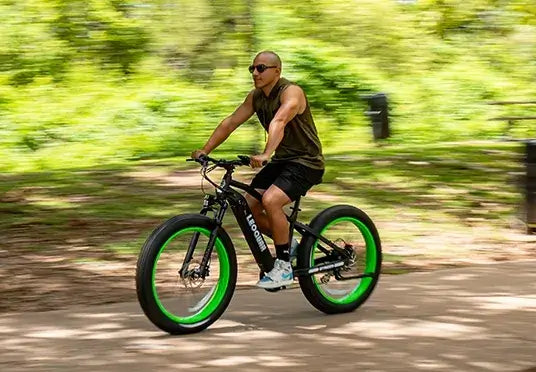
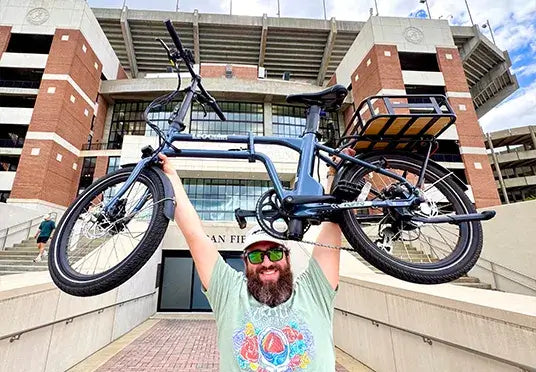
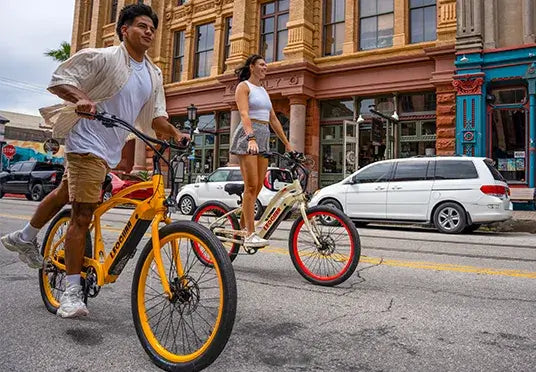
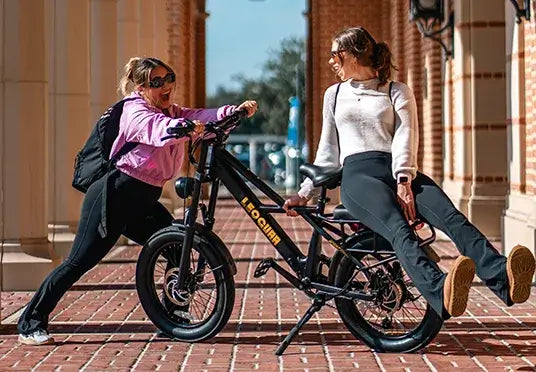
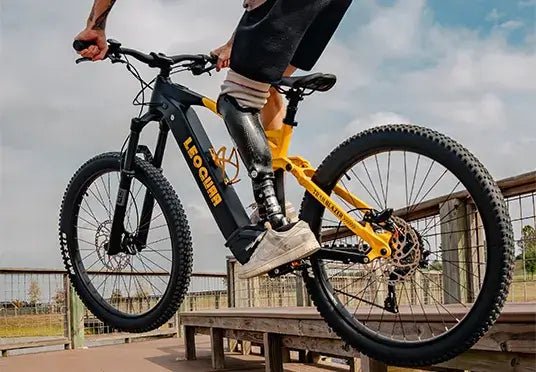

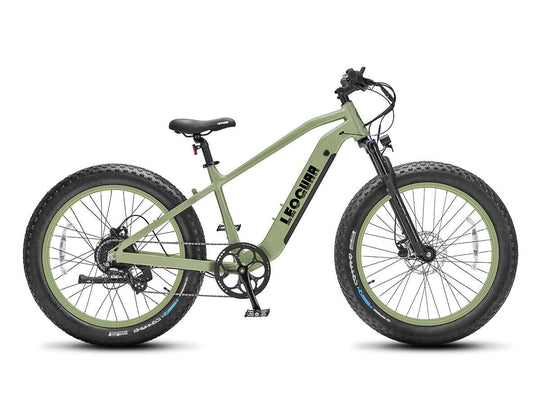
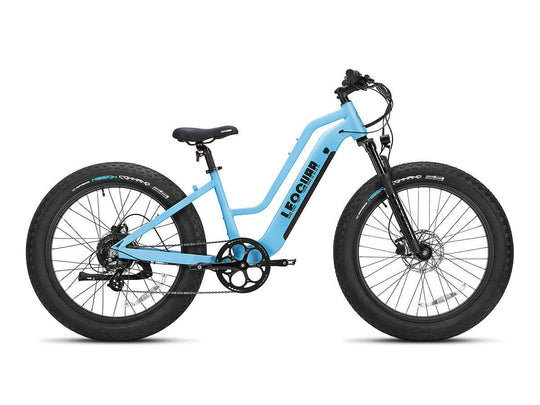
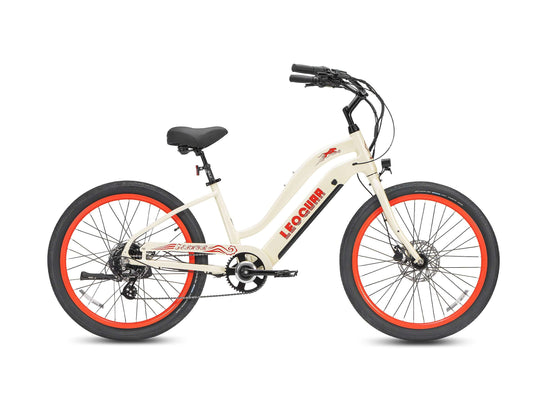
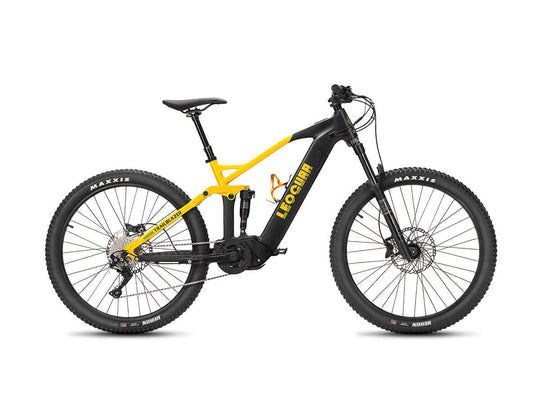

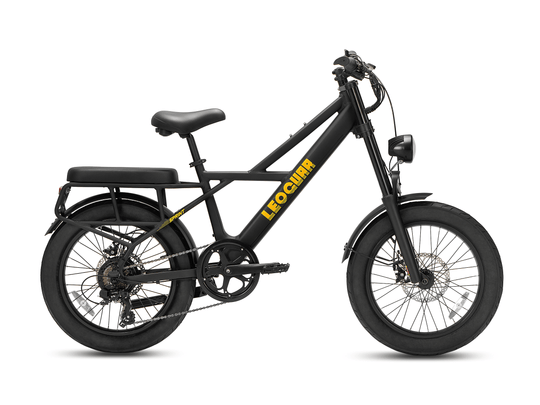
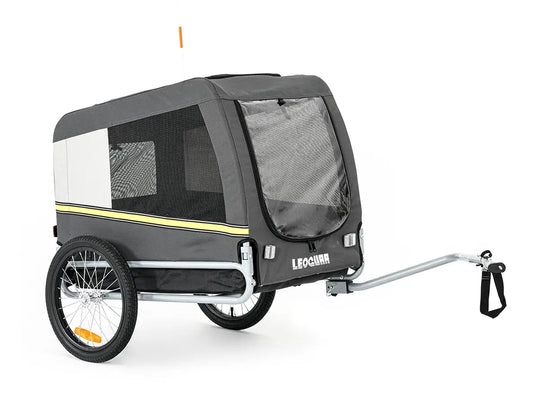
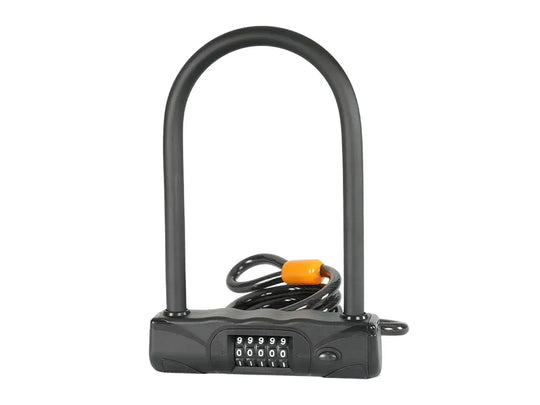

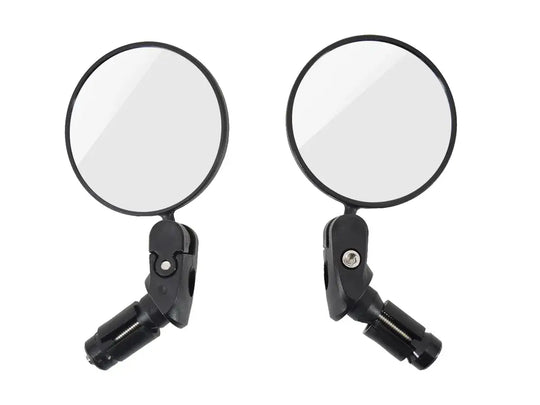




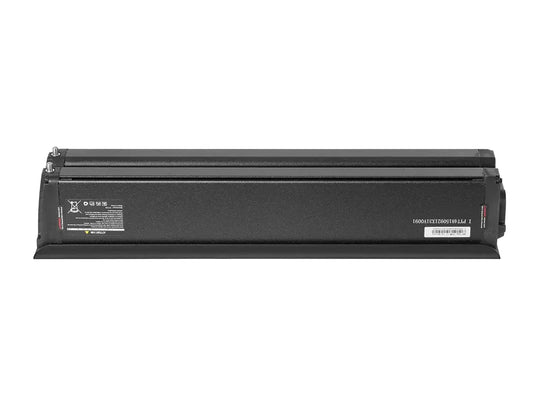

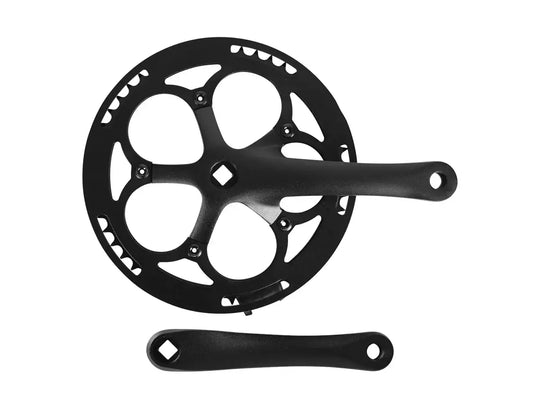
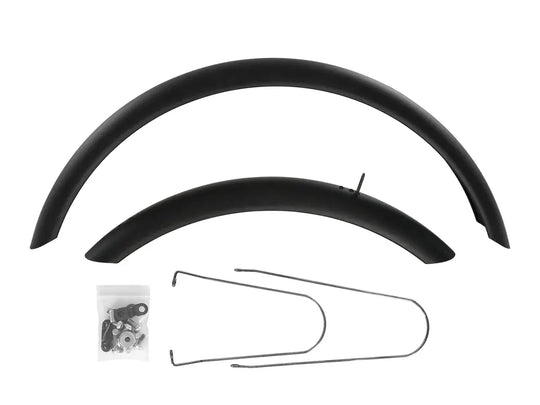
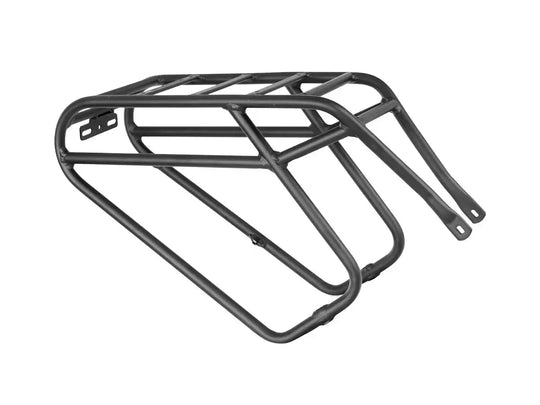
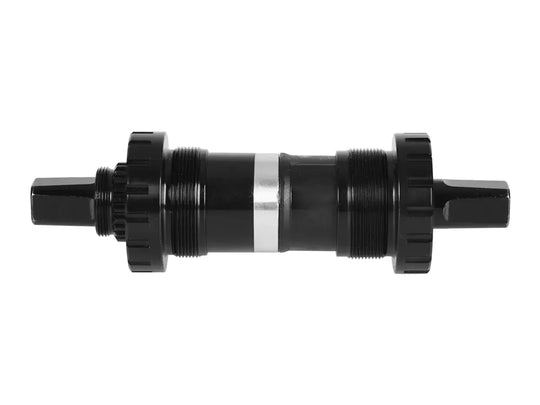
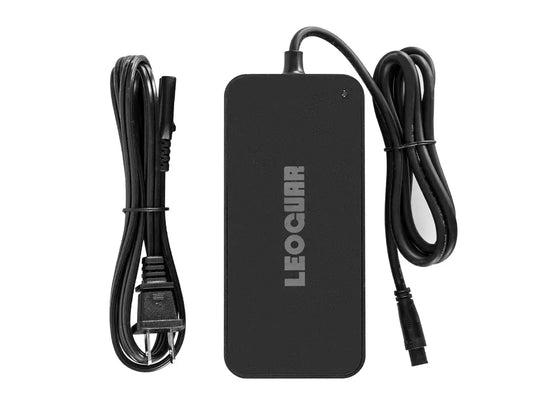
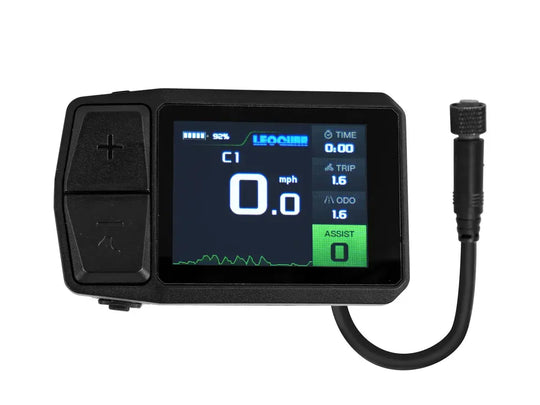

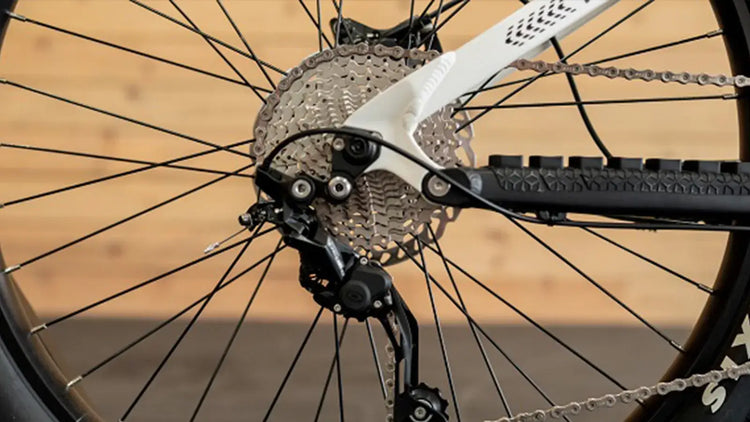
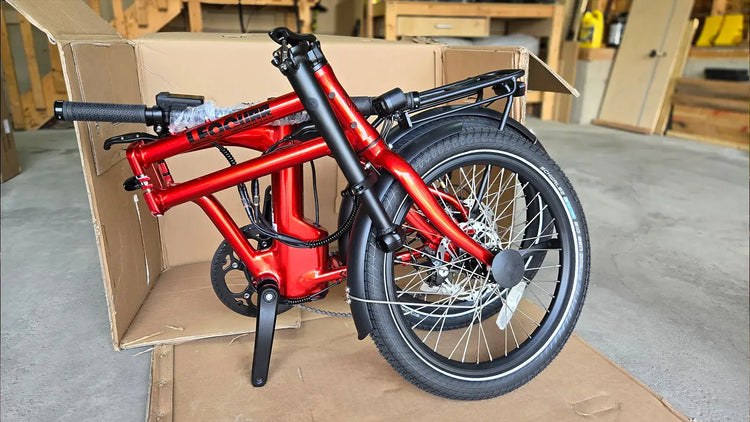
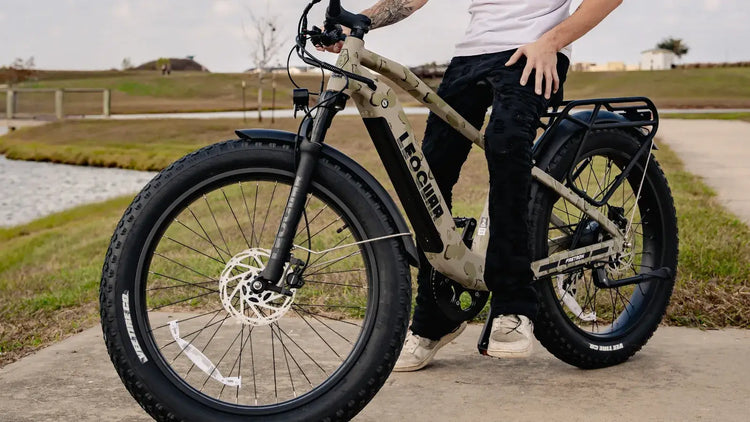
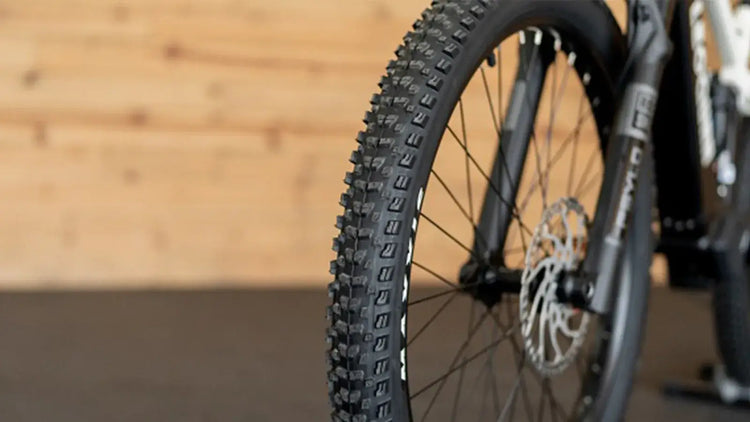
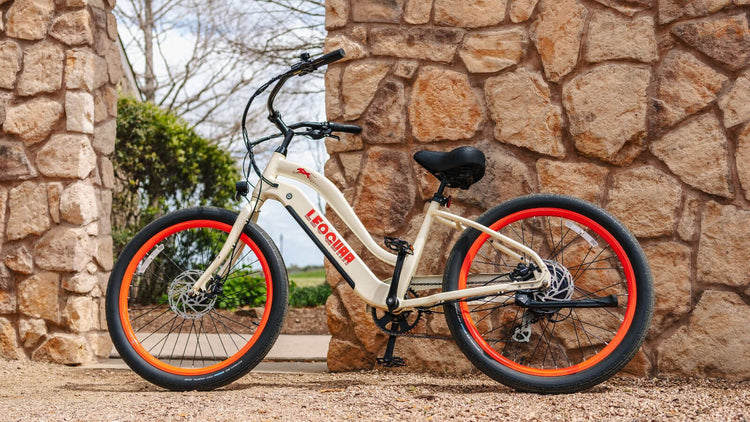

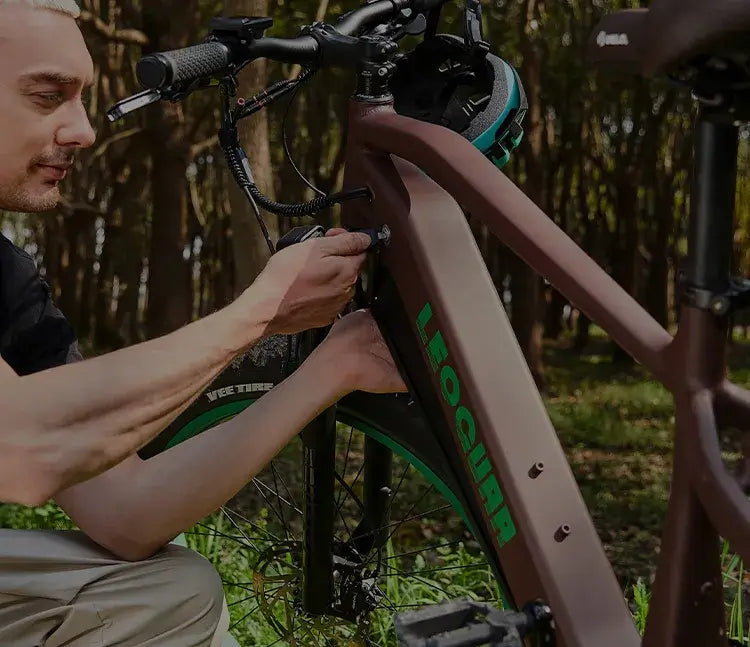
Leave a comment